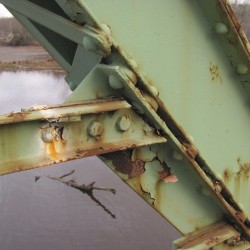Question 3 on the November 3rd Maine ballot asks the following:
“Do you favor an $85,000,000 bond issue for construction, reconstruction and rehabilitation of highways and bridges and for facilities and equipment related to ports, harbors, marine transportation, freight and passenger railroads, aviation, transit and bicycle and pedestrian trails, to be used to match an estimated $121,500,000 in federal and other funds?”
 In testimony supporting the proposed bond issue this past June, Maine Department of Transportation Commissioner David Bernhardt told the legislature’s the Joint Standing Committee on Appropriations and Financial Affairs that “driving on roads in need of repair costs Maine motorists $529 million a year in extra vehicle repairs and operating costs- $525 per motorist.” He added that the state currently has $119 million annually in unmet capital need for highway and bridge repairs. Even with these proposed bonds, the state’s annual capital needs shortfall would still be $72 million.
In testimony supporting the proposed bond issue this past June, Maine Department of Transportation Commissioner David Bernhardt told the legislature’s the Joint Standing Committee on Appropriations and Financial Affairs that “driving on roads in need of repair costs Maine motorists $529 million a year in extra vehicle repairs and operating costs- $525 per motorist.” He added that the state currently has $119 million annually in unmet capital need for highway and bridge repairs. Even with these proposed bonds, the state’s annual capital needs shortfall would still be $72 million.
Just last week, TRIP, a private nonprofit organization that researches, evaluates and distributes economic and technical data on surface transportation issues, issued a new report, Preserving Maine’s Bridges: The Condition and Funding Needs of Maine’s Bridge System. TRIP found that:
“Fifteen percent of Maine’s state-and locally maintained bridges are structurally deficient. A bridge is structurally deficient if there is significant deterioration of the bridge deck, supports or other major components. Structurally deficient bridges are often posted for lower weight or closed to traffic, restricting or redirecting large vehicles, including commercial trucks and emergency services vehicles. Eighteen percent of Maine’s bridges are functionally obsolete. Bridges that are functionally obsolete no longer meet current highway design standards, often because of narrow lanes, inadequate clearances or poor alignment.”
“Maine’s bridge conditions are only going to get worse if greater funding is not made available,” Will Wilkins, TRIP’s executive director, said in a press release. “Additional, consistent funding must be provided to improve the condition of Maine’s bridges, which are a vital part of the state’s transportation network and critical to economic growth and quality of life.”
Calling our transportation network a “cornerstone” of the state’s economy, Maine State Chamber of Commerce President Dana Connors told a South Portland press conference that “We need to invest more in our bridges in order to ensure safety and ensure that Maine is competitive.”
To invest in much-needed new transportation infrastructure, protect public safety, and grow Maine’s economy, VOTE YES on Question 3 on November 3rd!


